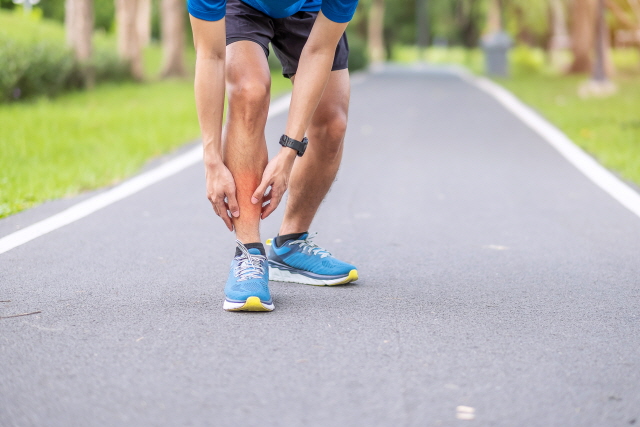
St36 and St 41 Are The Main Acupoints For The Treatment
By Winston Lee L.Ac, Ph.D., KMD
In American medical practices, shin pain often emerges as a silent disruptor, limiting mobility and diminishing quality of life. Yet, traditional Western remedies sometimes fall short of offering full relief. Let’s “roll up our sleeves” and explore how acupuncture can be the “game changer” in treating this common complaint.
Shin pain often occurs during activities that “go full throttle,” like sports or hiking. When folks “go the extra mile” or push hard, especially on uneven terrain or without proper footwear, the shin can be injured, resulting in discomfort or shin splints.
The tibialis anterior muscle, when injured, usually shows specific symptoms. Most often, patients will complain about a sharp or dull pain on the front side of the shin, especially when they lift their foot upwards. This pain can make walking or running difficult. Additionally, there might be some swelling or tenderness in the area of the muscle. It is considered positive when the examiner pushes in the opposite direction while the patient is dorsi flexing the toes and pain is present.
It’s like “hitting the bullseye” to tackle the tibialis anterior’s trigger point. First, have the patient lie face up and locate the muscle’s tender spot with the physician’s fingers. With the needle angled at about 45 degrees, gently insert it into the tender area. Adjust depth based on patient feedback, ensuring they feel a “good kind of ache.” The ST36 and ST41 are the major acupoints of the tibialis anterior. ST36 shall be 2~3 inches in depth in adults. ST41 lies in the depression at the midpoint of the transverse crease of the ankle, between the tendons of the extensor digitorum longus and hallucis longus. Think of it as the “middle ground” between these tendons.
Electro-acupuncture is another good choice to make the most of this treatment. A common approach for acute muscle injuries is to use a frequency between 2~10 Hz. For chronic or prolonged muscle injuries, higher frequencies are generally employed. Frequencies ranging from 50-100 Hz are commonly used.
Plus, we can use sports taping after using acupuncture treatment. Start at the ankle, using an “anchor” strip. Then, with a “gentle pull,” wind the tape diagonally up the shin, following the muscle’s path. Don’t forget to ask the patient to take it off the next morning to prevent allergic irritation of the skin.
































